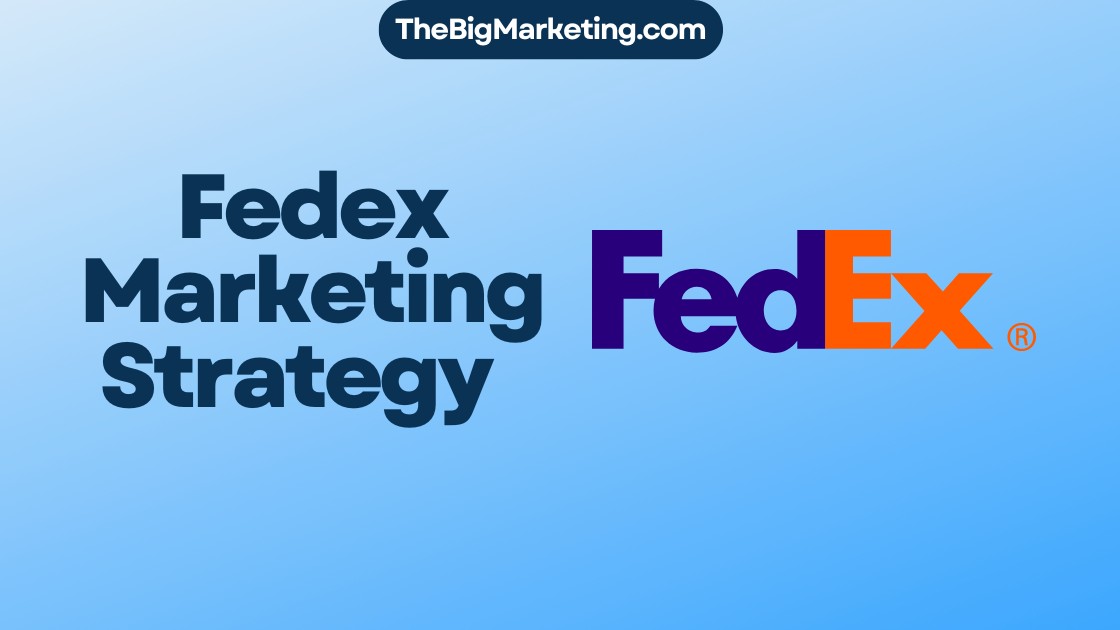Healthcare marketing is a dynamic field that continually evolves to keep pace with technological advancements, changing patient behaviors, and industry regulations. In this article, we will explore the trends and strategies that will be crucial for marketing medical practices in 2024. From digital marketing to patient acquisition strategies, we will provide insights and practical tips to help healthcare providers effectively promote their medical practices.
Key Takeaways:
- Adopt digital marketing techniques to reach and engage a wider audience.
- Develop a strong online presence through optimized websites and targeted SEO strategies.
- Utilize branding strategies to build trust and credibility among patients.
- Implement personalized communication strategies to enhance patient engagement and satisfaction.
- Stay compliant with HIPAA regulations to protect patient privacy and ensure data security.
AI Driving Personalization in Healthcare Marketing
One of the key trends revolutionizing healthcare marketing is the integration of AI-driven personalization. Healthcare marketers are harnessing the power of AI-powered analytics to segment patient groups based on their unique demographics and individual needs. This enables them to create highly personalized and relevant communications that resonate with patients on a deeper level, fostering enhanced patient engagement and driving better health outcomes.
AI personalization in healthcare marketing extends beyond simple customization of marketing materials. It extends to the development of customized treatment plans that cater to the specific needs of each patient, ensuring more effective care and improved patient satisfaction. Moreover, AI-powered analytics enable healthcare marketers to allocate marketing resources more efficiently, reaching the right patients with the right message at the right time, ultimately leading to better patient acquisition and retention.
With AI personalization, healthcare organizations can deliver targeted communications that address individual patient preferences, concerns, and healthcare goals. These personalized communications can take various forms, including tailored email campaigns, personalized website experiences, and targeted social media advertisements. By leveraging AI, healthcare marketers can create a seamless and cohesive patient journey, building trust and fostering long-term patient loyalty.
Benefits of AI Personalization in Healthcare Marketing
The use of AI in healthcare marketing offers several distinct advantages:
- Enhanced Patient Engagement: By delivering highly personalized communications, healthcare organizations can capture the attention of patients and drive meaningful engagement. Patients are more likely to actively participate in their own care when they feel their unique needs are understood and addressed.
- Improved Patient Outcomes: AI-driven personalization allows for the development of customized treatment plans that align with patients’ specific health conditions and preferences. This tailored approach can result in more effective treatments and improved patient outcomes.
- Efficient Resource Allocation: AI-powered analytics enable healthcare marketers to analyze patient data and segment populations more effectively. This helps allocate marketing resources to target specific patient groups, leading to greater efficiency and cost-effectiveness.
- Increased Patient Satisfaction: Personalized communications and customized treatment plans cater to patients’ individual needs, preferences, and expectations, leading to improved patient satisfaction. Satisfied patients are more likely to provide positive reviews, refer others to the practice, and become long-term loyal patients.
AI-driven personalization is transforming the way healthcare organizations approach marketing. By leveraging AI-powered analytics, healthcare marketers can develop highly targeted and personalized strategies that put the patient at the center of care. As a result, healthcare practices can increase patient engagement, provide customized treatment plans, and allocate marketing resources more effectively, ultimately improving patient acquisition and enhancing overall healthcare outcomes.
Website User Experience Continues to Matter
A responsive and user-friendly website is crucial for medical practices to engage patients. Creating a seamless online experience not only improves patient satisfaction but also enhances the overall online presence of the medical practice. In order to optimize website user experience, medical practices can incorporate the following features:
- Online Appointment Scheduling: Implementing an easy-to-use online appointment scheduling system enables patients to book appointments conveniently, reducing administrative tasks and improving patient engagement.
- Secure Patient Portals: Providing secure patient portals for accessing medical records and information ensures the confidentiality of patient data, building trust and enhancing the patient experience.
- Interactive Content: Incorporating interactive content like videos engages patients and helps them better understand medical procedures, treatments, and health-related information.
By focusing on website user experience, medical practices can effectively engage patients, streamline administrative tasks, and enhance patient satisfaction. A well-designed website with features such as online appointment scheduling and secure patient portals contributes to a positive patient experience, ultimately driving patient acquisition and loyalty.
Benefits of a User-Friendly Website
A user-friendly website plays a crucial role in attracting and retaining patients. Here are some key benefits of investing in website user experience:
| Benefits | Description |
|---|---|
| Improved Patient Satisfaction | A user-friendly website makes it easy for patients to navigate and find the information they need, resulting in a positive experience and increased satisfaction. |
| Enhanced Online Presence | A well-designed website that offers a seamless user experience improves the online presence of the medical practice, making it easier for potential patients to discover and engage with the practice. |
| Streamlined Administrative Tasks | Features such as online appointment scheduling and secure patient portals reduce manual administrative tasks, allowing medical staff to focus on providing quality care. |
| Increased Patient Engagement | Interactive content and user-friendly functionalities encourage patient engagement and empower them to take an active role in their healthcare journey. |
HIPAA Continues to Play an Important Role
As healthcare organizations place a growing emphasis on personalized marketing, ensuring HIPAA compliance is more important than ever. HIPAA, the Health Insurance Portability and Accountability Act, safeguards patient privacy and protects sensitive health information. By adhering to HIPAA regulations, healthcare organizations can build trust with patients, maintain data security, and execute effective marketing and engagement campaigns.
To achieve HIPAA compliance, healthcare organizations must handle protected health information (PHI) securely. This involves implementing robust encryption and security measures to prevent unauthorized access or data breaches. Healthcare organizations should also adopt privacy-friendly alternatives, such as secure communication channels and consent-based data collection, to enhance patient privacy while enabling targeted marketing efforts.
Customer Data Platforms (CDPs): Managing and Protecting Patient Data
Customer Data Platforms (CDPs) are gaining popularity in the healthcare industry as an effective solution for managing and protecting patient data. CDPs offer centralized databases that consolidate data from multiple sources, allowing healthcare organizations to segment patient groups and personalize marketing communications.
CDPs provide a comprehensive view of patient data while maintaining privacy and security standards. They enable healthcare organizations to track and analyze patient interactions and preferences, ensuring that targeted marketing campaigns align with individual needs. By leveraging CDPs, healthcare organizations can improve patient engagement and deliver more personalized experiences while remaining compliant with HIPAA regulations.
Safeguarding Patient Data: HIPAA Compliance Checklist
To ensure compliance with HIPAA regulations, healthcare organizations should adhere to the following guidelines:
- Implement strict access controls and authentication mechanisms to secure patient data.
- Encrypt sensitive information both at rest and in transit to protect against unauthorized access.
- Regularly conduct risk assessments and vulnerability scans to identify and address potential security gaps.
- Train staff on HIPAA regulations, data security best practices, and the importance of patient privacy.
- Establish privacy policies and procedures for handling patient data, including clear guidelines for data retention and disposal.
- Monitor and audit data access logs to detect and respond to any breaches or unauthorized activities.
- Implement secure communication channels, such as encrypted email or patient portals, for exchanging sensitive information.
HIPAA Compliance and Marketing: Striking the Balance
While HIPAA compliance is crucial for protecting patient privacy, it is also essential for healthcare organizations to effectively market their services. By adopting privacy-friendly alternatives and leveraging secure technology platforms, healthcare organizations can strike a balance between compliance and marketing goals. With a strong focus on HIPAA compliance and data security, healthcare organizations can build consumer trust, maintain patient privacy, and establish themselves as leaders in patient-centric care.
Multi-Channel Marketing Integrates Patient Communication
Healthcare organizations are increasingly recognizing the significant advantages of multi-channel marketing in reaching and engaging patients. By strategically deploying various channels such as social media platforms, email marketing campaigns, and online advertising, medical practices can deliver targeted and consistent messaging to patients at different stages of their healthcare journey. Implementing comprehensive multi-channel marketing strategies not only enhances visibility but also enables data collection for further optimization, ultimately driving successful patient acquisition.
Multi-channel marketing allows healthcare organizations to tailor their messaging and communication methods to suit the preferences and behaviors of different patient segments. Through effective segmentation and targeting, medical practices can customize their marketing campaigns to resonate with specific patient demographics and needs. By leveraging technology, healthcare organizations can analyze data from various channels to gain valuable insights into patient behavior, enabling them to refine marketing strategies and enhance patient engagement.
Moreover, multi-channel marketing facilitates seamless patient communication by providing numerous touchpoints for engagement. Patients can interact with medical practices through social media platforms, where they can stay informed about services, ask questions, and receive timely responses. Email marketing campaigns allow for targeted communication, such as appointment reminders and follow-up messages, while online advertising increases brand visibility and encourages patient interactions.
By integrating patient communication across multiple channels, medical practices can establish themselves as accessible and responsive healthcare providers. Consistent messaging and branding across various platforms build trust and strengthen patient relationships, leading to increased patient satisfaction and loyalty. Additionally, multi-channel marketing enables healthcare organizations to gather valuable data and feedback, allowing for ongoing improvement and optimization of marketing efforts.
As technology continues to advance and patient behavior evolves, healthcare organizations must adapt their marketing strategies to stay ahead. Embracing multi-channel marketing as an integral part of patient communication and engagement is essential for medical practices to thrive in the competitive healthcare landscape.
Local and Location-based SEO for Success
When it comes to healthcare organizations, having a strong online presence in specific geographic locations is essential for attracting patients. This is where local SEO plays a crucial role. By optimizing for local keywords and implementing location-based strategies, medical practices can significantly increase their visibility and patient acquisition.
Optimizing for Local Keywords
One of the key aspects of local SEO is optimizing for local keywords that are relevant to the medical practice and the target audience. By incorporating location-specific terms in website content, meta tags, titles, and descriptions, healthcare organizations can improve their search engine rankings and attract potential patients who are searching for services in their area.
Creating a Google Business Profile
A Google Business Profile is an essential tool for enhancing online visibility and credibility. By creating a profile and optimizing it with accurate and up-to-date information about the medical practice’s location, contact details, services, and hours of operation, healthcare organizations can improve their visibility in Google search results, Google Maps, and other Google platforms that local consumers frequently use.
Benefits of Local and Location-based SEO
The implementation of local and location-based SEO strategies offers several benefits for healthcare organizations:
- Increased visibility in local search results, making it easier for potential patients to find the medical practice.
- Higher chances of ranking in the coveted Google Local Pack, which showcases the top three local results and displays relevant information such as ratings, reviews, and contact details.
- Improved trust and credibility among local patients, as a strong online presence demonstrates the medical practice’s commitment to serving the local community.
- Better targeting of patients in specific geographic locations, allowing healthcare organizations to focus their marketing efforts and resources more effectively.
Implementing local and location-based SEO strategies is crucial for healthcare organizations to stand out in the digital landscape and attract local patients. By optimizing for local keywords and creating a comprehensive Google Business Profile, medical practices can enhance their online presence, improve visibility, and drive patient acquisition in their specific communities.
| Benefits of Local and Location-based SEO |
|---|
| Increased visibility in local search results |
| Higher chances of ranking in the Google Local Pack |
| Improved trust and credibility among local patients |
| Better targeting of patients in specific geographic locations |
SaaS Healthcare Marketing Platforms Drive Digital and Print Marketing
Healthcare organizations can optimize their digital and print marketing efforts by leveraging SaaS healthcare marketing platforms. These innovative platforms provide comprehensive solutions for managing marketing campaigns, analyzing data, and improving lead generation. By automating key healthcare marketing processes, organizations can allocate resources effectively, improve brand awareness, and enhance patient care.
With SaaS healthcare marketing platforms, healthcare organizations can streamline their digital marketing efforts by:
- Developing and executing targeted digital campaigns on various online channels such as social media, search engines, and healthcare-specific platforms
- Creating visually appealing and engaging content that resonates with patients and promotes the medical practice’s services and expertise
- Tracking and analyzing digital marketing performance metrics to optimize campaigns and maximize return on investment
In addition to digital marketing, SaaS healthcare marketing platforms can also enhance print marketing strategies by:
- Efficiently managing print collateral, such as brochures, flyers, and direct mail campaigns
- Personalizing print materials based on patient demographics or specific target audiences
- Integrating print marketing with digital campaigns to create a seamless and cohesive patient experience
By integrating digital and print marketing efforts through SaaS platforms, healthcare organizations can achieve greater efficiency, consistency, and effectiveness in their marketing endeavors. The automation and data analysis capabilities offered by these platforms enable organizations to refine their strategies, improve lead generation, and ultimately drive patient acquisition.
Video Continues to Drive Patient Engagement
In today’s digital age, video marketing has become an integral part of healthcare marketing strategies. Videos are a powerful tool that enables healthcare marketers to engage with patients in a meaningful and impactful way. Video content can educate and inform patients, simplify complex medical information, and showcase services and treatments provided by medical practices.
With the rise of streaming video platforms and webinars, healthcare organizations can connect with patients and busy healthcare providers effectively. These platforms offer an interactive and engaging experience, allowing patients to learn more about their healthcare options and make informed decisions. Video demonstrations can provide patients with a visual understanding of medical procedures, treatments, and preventive care measures.
Shareable on websites, social media platforms, and other digital channels, video content has the potential to reach a wide audience and generate increased patient engagement. Videos can be easily shared and accessed, making them a convenient and accessible resource for patients seeking healthcare information.
The use of healthcare videos not only enhances patient engagement but also improves the overall patient experience. Patients can gain a better understanding of their medical conditions, treatment plans, and healthcare options through engaging video content. Moreover, videos can help build trust and credibility for medical practices by showcasing their expertise and commitment to patient care.
By incorporating video marketing into their overall healthcare marketing strategy, medical practices can effectively communicate their services, establish themselves as thought leaders in the industry, and foster stronger patient relationships. Video content has the power to captivate and educate patients, driving higher patient engagement and ultimately contributing to the success of the medical practice.
Reputation Management is a Marketing Asset
Reputation management is a critical component of healthcare marketing. Establishing a positive online reputation can significantly impact a medical practice’s success by attracting new patients and enhancing the overall perception of the brand. To effectively manage reputation, healthcare organizations should adopt strategies that prioritize online reviews, patient satisfaction, and brand appeal.
Online Reviews: Influencing Patient Decisions
Online reviews have become a primary factor in patients’ decision-making process when choosing a healthcare provider. Positive reviews not only build trust but also serve as a valuable form of social proof for potential patients. Healthcare organizations should actively encourage satisfied patients to leave reviews and ratings on reputable platforms, such as Google My Business and healthcare-specific review sites.
Responding to Reviews: Demonstrating Care and Transparency
Responding to reviews, whether positive or negative, is essential in reputation management. Promptly acknowledging feedback shows a commitment to patient care and ensures that patients feel heard and valued. It is crucial to address any negative reviews with empathy and a willingness to resolve the issue. By publicly demonstrating transparency and a dedication to patient satisfaction, healthcare organizations can foster trust and loyalty among current and prospective patients.
Collecting Patient Feedback: Continuous Improvement
Collecting patient feedback plays a crucial role in reputation management. By regularly seeking input through surveys, questionnaires, and follow-up communications, healthcare organizations can gain valuable insights into their patients’ experiences. This feedback provides an opportunity to identify areas for improvement and make necessary adjustments to enhance patient satisfaction.
Utilizing Social Media: Building Trust and Brand Appeal
Social media platforms offer a powerful tool for engaging with patients and showcasing a medical practice’s brand. Healthcare organizations can leverage social media to highlight positive patient stories, share educational content, and address frequently asked questions. By actively participating in conversations and building meaningful connections, healthcare practices can build trust, enhance brand appeal, and attract new patients.
| Benefits of Reputation Management | Strategies for Effective Reputation Management |
|---|---|
| 1. Attract new patients | • Encourage positive online reviews from satisfied patients |
| 2. Enhance brand perception | • Respond promptly and professionally to reviews |
| 3. Build trust and credibility | • Actively collect and address patient feedback |
| 4. Foster patient loyalty | • Utilize social media to engage with patients |
| 5. Differentiate from competitors | • Monitor and manage online reputation consistently |
The Importance of Digital Transformation in Healthcare
The healthcare industry is undergoing a significant transformation driven by advancements in technology. To stay competitive in this evolving landscape, healthcare marketing strategies must adapt to these changes and embrace digital transformation. Incorporating technology advancements such as telemedicine, virtual consultations, and patient portals can significantly enhance the patient experience and satisfaction.
Digital transformation enables medical practices to offer convenient and accessible healthcare services. Telemedicine allows patients to receive virtual consultations from the comfort of their homes, eliminating the need for in-person visits for minor ailments or follow-up appointments. This not only improves patient convenience but also reduces healthcare costs and wait times.
The use of patient portals facilitates seamless communication between healthcare providers and patients. Patients can access their medical records, schedule appointments, request medication refills, and securely communicate with their healthcare team. This streamlined approach enhances patient engagement and empowers individuals to take an active role in managing their health.

Furthermore, digital transformation opens doors to new possibilities in healthcare marketing. Medical practices can leverage digital platforms to target specific patient demographics, personalize messaging, and deliver tailored health education materials. By understanding patients’ needs and preferences, healthcare marketing becomes more effective and efficient.
Embracing digital transformation is essential for medical practices to meet the evolving needs of patients and remain competitive in the healthcare industry. By leveraging technology advancements, healthcare providers can enhance patient experience, improve patient outcomes, and drive patient loyalty.
| Benefits of Digital Transformation in Healthcare | Examples |
|---|---|
| Improved patient experience and satisfaction | – Virtual consultations – Patient portals |
| Enhanced communication between healthcare providers and patients | – Secure messaging systems – Online appointment scheduling |
| Targeted and personalized healthcare marketing | – Customized health education materials – Tailored messaging based on patient demographics |
| Increased efficiency and cost-effectiveness | – Reduced wait times through virtual consultations – Streamlined administrative processes |
Conclusion
In conclusion, implementing effective healthcare marketing strategies is crucial for medical practices in 2024. By focusing on personalized communication, creating user-friendly websites, ensuring HIPAA compliance, embracing multi-channel marketing, optimizing for local SEO, utilizing SaaS healthcare marketing platforms, leveraging video content, managing reputation, and embracing digital transformation, medical practices can enhance patient engagement, boost their online presence, and drive patient acquisition.
Personalized communication allows medical practices to connect with patients on a deeper level, resulting in increased patient satisfaction and loyalty. User-friendly websites with features such as online appointment scheduling and secure patient portals enhance the patient experience and improve engagement. Adhering to HIPAA regulations builds trust with patients and ensures the protection of their sensitive information.
Utilizing multi-channel marketing strategies, including social media, email marketing, and online advertising, enables medical practices to reach patients at different touchpoints, increasing visibility and driving patient acquisition. Local SEO optimization helps medical practices to target specific geographic areas and attract patients in those locations. SaaS healthcare marketing platforms provide comprehensive solutions for managing marketing campaigns and analyzing data to improve lead generation.
Video content is a powerful tool for engaging patients, simplifying complex medical information, and showcasing services. Managing online reputation through active review management and leveraging social media platforms helps build trust and appeal. Lastly, digital transformation initiatives like telemedicine and patient portals contribute to a seamless patient experience and further enhance patient acquisition.
FAQ
What are some effective marketing strategies for medical practices in 2024?
Some effective marketing strategies for medical practices in 2024 include personalized communication, user-friendly websites, HIPAA compliance, multi-channel marketing, local SEO, SaaS healthcare marketing platforms, video content, reputation management, and digital transformation.
How can AI drive personalization in healthcare marketing?
AI-powered analytics can be used to segment patient groups based on demographic information and needs, allowing for more personalized and relevant communications. This includes creating customized treatment plans, engaging patients through personalized communications, and allocating marketing resources more effectively.
Why is website user experience important for medical practices?
A responsive and user-friendly website is crucial for medical practices to engage patients. Features such as online appointment scheduling, secure patient portals for accessing medical records and information, and interactive content like videos contribute to a positive user experience. A well-designed website reduces administrative tasks, improves patient satisfaction, and enhances the overall online presence of the medical practice.
How can healthcare organizations ensure HIPAA compliance in their marketing efforts?
Healthcare organizations can ensure HIPAA compliance by handling protected health information (PHI) securely, utilizing encryption and security measures, and adopting privacy-friendly alternatives for effective marketing and engagement campaigns. Customer Data Platforms (CDPs) are becoming popular for managing and protecting patient data while enabling targeted marketing campaigns.
Why is multi-channel marketing important in healthcare?
Healthcare organizations are recognizing the benefits of multi-channel marketing to reach and engage patients. By utilizing multiple channels such as social media, email marketing, and online advertising, medical practices can deliver targeted and consistent messaging to patients at different stages of the patient journey. Multi-channel marketing improves visibility, enables data collection for further optimization, and ultimately drives patient acquisition.
How can local SEO benefit healthcare organizations?
Local SEO is crucial for healthcare organizations to improve their online presence and attract patients in specific geographic locations. Optimizing for local keywords, creating a Google Business Profile, and ensuring accurate and up-to-date information about the medical practice’s location and contact details can significantly increase visibility and patient acquisition.
How can SaaS healthcare marketing platforms benefit medical practices?
Healthcare organizations can leverage SaaS healthcare marketing platforms to streamline their digital and print marketing efforts. These platforms offer comprehensive solutions for managing marketing campaigns, analyzing data, and improving lead generation. By automating healthcare marketing processes, organizations can allocate resources effectively, improve brand awareness, and enhance patient care.
How can video marketing be utilized in healthcare marketing?
Video marketing remains a powerful tool for healthcare marketers to engage patients. Healthcare videos can educate and inform patients, simplify complex medical information, and showcase services and treatments. Streaming video platforms and webinars are effective ways to connect with patients and busy healthcare providers. Video content can be shared on websites, social media platforms, and other digital channels to enhance patient engagement.
Why is reputation management important in healthcare marketing?
Reputation management plays a vital role in healthcare marketing. Positive online reviews and recommendations can attract new patients and improve the overall perception of the medical practice. Healthcare organizations should actively manage and respond to reviews, collect patient feedback, and use social media platforms to build trust and enhance brand appeal.
How does digital transformation impact healthcare marketing?
Digital transformation is reshaping the healthcare industry, and marketing strategies need to adapt accordingly. Embracing technological advancements, such as telemedicine, virtual consultations, and patient portals, can improve patient experience and satisfaction. Medical practices should prioritize digital transformation initiatives to stay competitive and meet the evolving needs of patients.








